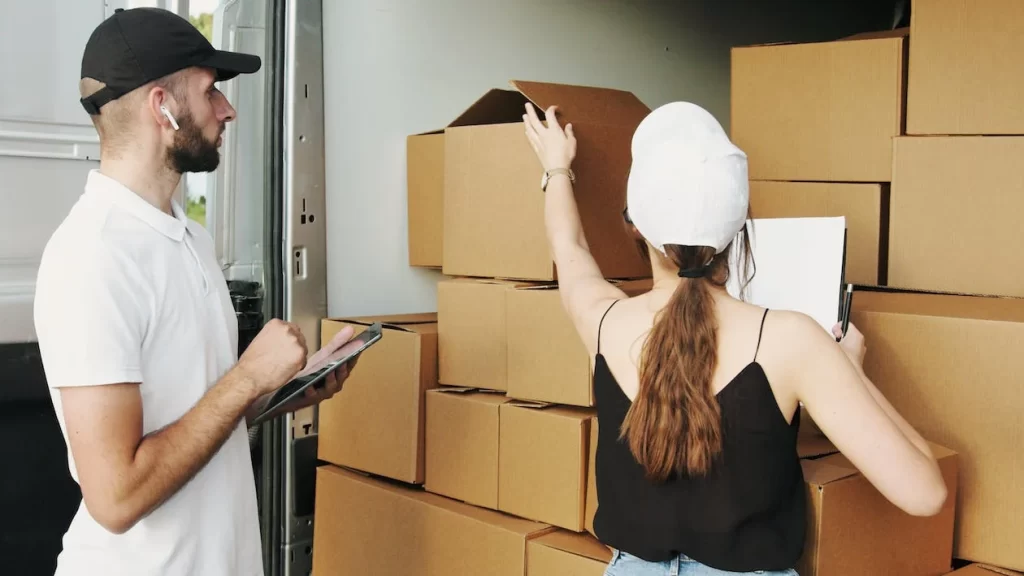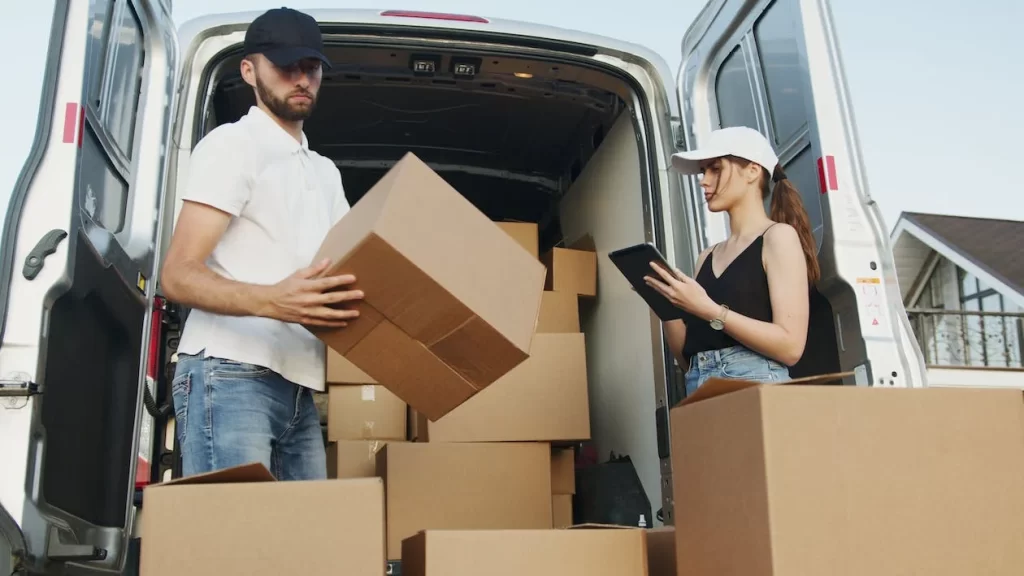Table of Contents
Moving is one of life’s significant transitions, often marked by a blend of excitement, anticipation, and a fair share of stress. Whether you’re relocating across town or to a different country, the key to a smooth transition is mastering the art of timing. This guide aims to equip you with the knowledge and strategies needed to optimize your moving timeline, ensuring a seamless and efficient relocation experience.
Understanding the intricacies of a moving timeline is crucial as it impacts the logistics of your move and your overall moving experience. Each move is unique, and so should be each moving timeline. From the initial planning phases to the moment you settle into your new space, numerous factors will shape your moving journey.
In this comprehensive guide, we’ll delve into the factors that influence how long it takes to move, provide tailored advice for different types of moves, and offer practical tips to streamline your moving process. By understanding and applying these strategies, you’ll be well-equipped to manage your move effectively, ensuring that your transition is as smooth and stress-free as possible.

Essential Factors Influencing Your Moving Timeline
Size and Scope of the Move
The size and scope of your move are pivotal in determining your moving timeline. Assessing the volume of your belongings is the first step. A studio apartment will naturally require less time to pack and move compared to a four-bedroom house. Consider the types of items you have: large furniture pieces may need disassembly, and a vast collection of books or kitchenware can extend packing times, regardless of your home’s size.
- Volume of Belongings: Larger homes with more contents necessitate extended packing and moving durations.
- Item Types: Special items requiring disassembly or careful packing can influence your timeline.
- Home Layout: The layout of your current and new home, including stairs and access points, impacts the move’s efficiency.
Key Takeaway: An accurate inventory aids in precise moving timeline planning.
Distance and Destination
The distance between your current and new residence significantly influences your move’s duration. Local relocations are typically quicker than long-distance or international moves. The latter introduces complexities like customs and shipping delays. Also, the characteristics of your destination, such as urban congestion or rural access issues, can affect the moving process.
- Local vs. Long-Distance: Proximity impacts logistical planning and overall move time.
- International Considerations: Moving abroad requires understanding and planning for customs and international logistics.
- Destination Characteristics: Unique challenges based on your new location’s urban or rural setting can influence the timeline.
Key Takeaway: Planning for destination-specific factors is crucial for a seamless move.
Preparation and Organization
Effective preparation and organization are key to a successful move. Start planning months in advance to address potential challenges proactively. Decluttering not only simplifies your move but also reduces the moving timeline. Creating a detailed timeline and checklist, including tasks like address updates and service transfers, ensures no detail is overlooked.
- Advance Planning: Early planning addresses challenges and aids in smooth execution.
- Decluttering: Simplifies the move and reduces packing and unpacking times.
- Timeline and Checklist: A detailed schedule with a checklist helps track all necessary tasks, ensuring nothing is missed.
Key Takeaway: Meticulous organization and preparation can significantly streamline your moving process.
Navigating Different Types of Moves
Each move type comes with its unique set of challenges and requirements. Understanding these can help you plan more effectively, whether you’re moving across the street or across the globe.
Local Moves
Local relocations, though geographically less daunting, require a structured approach to ensure a smooth transition.
Packing and Preparation for Local Moves
- Inventory Management: Begin with creating a detailed inventory of your items. This step aids in determining the amount of packing material needed and the size of the moving vehicle.
- Systematic Packing: Start packing room by room, labeling boxes with their contents and designated room in the new house to streamline the unpacking process.
- Essentials Box: Prepare an essentials box with items you’ll need on the first day, like toiletries, snacks, and basic tools, to avoid rummaging through boxes.
Day of the Move for Local Relocations
- Efficient Loading: Organize the loading process by keeping items from the same room together, which simplifies unloading and setup at the new location.
- Transport Coordination: Ensure the moving vehicle is appropriately sized for your belongings to minimize trips and coordinate parking arrangements at both locations to facilitate smooth loading and unloading.
- Continuous Communication: Stay in constant communication with your moving team or helpers to address any issues promptly and ensure the move stays on schedule.
Settling In After a Local Move
- Unpack Strategically: Begin with the essentials box, followed by setting up bedrooms and the kitchen to quickly return to a normal routine.
- Space Planning: Before unpacking, consider the layout of each room and place furniture and large items first to avoid having to move them later.
- Community Integration: Take the opportunity to explore your new neighborhood, introduce yourself to neighbors, and locate essential services like supermarkets and healthcare facilities.
Long-Distance Moves
The complexity of long-distance moves necessitates detailed and forward-thinking planning.
Planning and Coordination for Long-Distance Moves
- Detailed Itinerary: Develop a comprehensive travel itinerary, including routes, rest stops, and accommodations if the journey spans multiple days.
- Professional Movers: Consider hiring reputable long-distance movers who specialize in cross-country relocations, ensuring they have a clear understanding of your inventory and expectations.
- Legalities and Compliance: Familiarize yourself with any interstate moving regulations or requirements to avoid complications.
- Car Shipping Services: If you are moving long-distance and planning on moving your vehicle as well, it might be best to consult with car shipping companies in your area.
Transportation Strategies for Long-Distance Moves
- Vehicle Selection: Choose the most appropriate transportation method based on the volume and nature of your belongings, considering factors like cost, speed, and safety.
- Tracking and Updates: Utilize tracking services if available to monitor the progress of your shipment and stay informed about the expected arrival time.
- Protection and Insurance: Ensure your items are adequately insured for long-distance transit, understanding the coverage details and the process for filing a claim if necessary.
Adjusting to New Settings After a Long-Distance Move
- Acclimatization Plan: Allocate time to adjust to the new environment, which might include different climate conditions, cultural norms, or living arrangements.
- Service Setup: Prioritize setting up essential services such as utilities, internet, and banking to establish a functional living space.
- Community Engagement: Engage with the local community through social activities, networking events, or local interest groups to build connections and acclimate socially.
International Moves
International moves are complex, involving layers of planning that extend beyond mere physical relocation.
Legal and Documentation Requirements for International Moves
- Visa and Work Permits: Ensure all necessary visas, work permits, or residency documents are secured well in advance of your move.
- Customs and Importation: Understand the customs regulations of the destination country, including restrictions or duties on shipped items.
- Legal Assistance: Consider consulting with an immigration attorney or a relocation specialist to navigate the complexities of international relocation.
Shipping and Transportation for International Moves
- Mode of Transport: Decide between air freight, which is faster but more expensive, and sea freight, which is cost-effective but slower, based on your priorities and budget.
- Packing for International Transit: Use professional packing services to ensure your belongings are secure and compliant with international shipping standards.
- Documentation: Prepare a detailed inventory list and ensure all shipments are accompanied by the correct documentation to prevent delays or issues at customs.
Cultural and Adjustment Period in International Relocations
- Cultural Research: Familiarize yourself with the culture, language, and etiquette of your destination country to ease the transition.
- Social Integration: Seek out expat communities or local interest groups to establish a support network and make social connections.
- Long-Term Considerations: Plan for long-term adjustments in housing, schooling for children, and career development, considering the broader impact on your family’s lifestyle and well-being.

DIY Moves vs. Hiring Professionals
Choosing between a DIY move and hiring professional movers is a pivotal decision that will influence not just your moving budget but also the overall ease and success of your move.
The DIY Approach
Undertaking a move on your own is a significant endeavor that requires thorough planning and execution. While it offers potential cost savings, it demands a comprehensive understanding of what the moving process entails.
- Packing Materials: Securing boxes, tape, bubble wrap, and other supplies is the first step in your DIY move.
- Packing and Loading: Allocate ample time for packing your belongings securely and loading them into the rental truck.
- Transportation: You’ll be responsible for driving the rental truck to your new home, which can add a layer of stress and physical demand.
- Unloading and Unpacking: Once at your destination, you’ll need to unload and unpack, which can be particularly challenging after a long journey.
Key Takeaway: A DIY move offers cost savings but requires significant time investment and physical effort.
The Benefits of Hiring Professionals
Opting for professional movers can alleviate much of the stress and physical labor associated with moving. Here’s how professionals can make a difference:
- Efficient Packing and Loading: Movers are skilled at packing belongings quickly and loading them efficiently, reducing the risk of damage.
- Transportation: Professional movers handle the driving, navigating, and securing your belongings during transit.
- Unloading and Setup: Upon arrival, movers can unload your items and, in some cases, help set up furniture in your new home.
- Handling Challenges: Pros are experienced in dealing with unexpected issues, from logistical challenges to navigating complex moving scenarios.
Key Takeaway: While more costly, hiring professionals can provide peace of mind, efficiency, and physical relief during the moving process.
Comparison Table: DIY Moves vs. Hiring Professionals
Mastering the Packing and Unpacking Process
The packing and unpacking stages are critical elements of your move, significantly impacting the overall efficiency and timeline of your relocation. By mastering these processes, you can ensure a smoother transition to your new home.
Effective Packing Strategies
Efficient packing goes beyond merely filling boxes. It’s an art that requires foresight, organization, and strategy. The goal is to protect your belongings during transit and streamline the unpacking process at your new destination.
- Start Early: Begin by packing non-essential items weeks before the move. This approach prevents last-minute rushing and reduces stress.
- Organize and Categorize: Group items by room, function, or importance. This method simplifies unpacking and helps you keep track of your belongings.
- Label Clearly: Use a labeling system that works for you—be it color-coding, numbering, or detailed descriptions. Include a brief inventory of contents and the intended room in your new home.
- Use Quality Materials: Invest in sturdy boxes, bubble wrap, packing paper, and high-quality tape. Protecting your items is paramount, and the right materials can make all the difference.
- Pack Smart: Distribute weight evenly and avoid overpacking boxes. Use towels, linens, or clothing to cushion fragile items, maximizing space and ensuring protection.
- Special Items: Give extra attention to fragile, valuable, or sentimental items. Consider custom crating or special packing solutions for such belongings.
Key Takeaway: A methodical and organized packing process not only secures your items but also sets the stage for a more efficient unpacking experience.
Unpacking and Settling In
Unpacking, while exciting, can be overwhelming without a clear plan. The key is to approach this phase with the same level of organization and strategy as packing.
- Essentials First: Start with an essentials box or two that contains items you’ll need immediately upon arrival—like toiletries, basic cookware, and bedding. This approach ensures comfort and functionality from day one.
- Room-by-Room: Unpack one room at a time, beginning with spaces that are central to your daily life, such as the kitchen and bedroom. This tactic not only helps with organization but also provides a sense of achievement as you see areas of your new home coming together.
- Inventory Check: Refer to your inventory list as you unpack. This step confirms that all items have arrived and allows you to quickly identify if anything is missing or damaged.
- Furniture Placement: Decide on the placement of large furniture pieces before unpacking everything else. It’s easier to move an empty dresser than one full of clothes.
- Personalize Your Space: As you unpack, take the opportunity to arrange and decorate your home to your liking. Personal touches can make a new environment feel familiar and comforting.
- Take Your Time: While it’s important to unpack essential items early, don’t rush the entire process. Allow yourself time to thoughtfully organize and decorate your new space.
Key Takeaway: Unpacking with a plan allows you to efficiently set up and personalize your new home, transforming it from a house to a lived-in space that reflects your style and needs.

Logistics and Special Considerations
When planning a move, focusing on logistics and special considerations is crucial. These aspects can significantly influence the efficiency and success of your relocation, impacting everything from the overall timeline to the safety of your belongings.
Transportation and Timing
The logistics of moving are often as complex as the packing process itself, involving careful consideration of transportation options and timing to ensure a seamless move.
- Choosing the Right Transportation: Depending on the distance and size of your move, options may include rental trucks, professional moving services, or even shipping containers. Each has its benefits and considerations, such as cost, timing, and capacity.
- Planning Your Route: For long-distance moves, route planning is essential. Consider factors like road conditions, weather forecasts, and potential stopovers, especially if you’re driving a rental truck or your vehicle.
- Scheduling: Timing is everything. Choose a moving date that avoids peak traffic times and consider seasonal impacts, like moving in less busy periods or avoiding harsh weather conditions.
- Contingency Planning: Always have a backup plan. Unexpected delays can occur, so it’s wise to plan for contingencies, such as extra days in your schedule for unforeseen events or delays.
Key Takeaway: Effective coordination of transportation and timing can mitigate many common moving challenges, ensuring that your belongings arrive safely and on schedule.
Handling Large or Special Items
Moving items that are oversized, valuable, or delicate requires additional foresight and planning. These items often represent not just financial value but sentimental worth, making their safe transport a priority.
- Special Packing Needs: Items like pianos, artworks, and antiques may need custom crating or special packing materials to protect them during the move. Consulting with professionals who have experience in moving such items can provide valuable insights.
- Transport Considerations: Some items may require specialized transportation methods. For instance, artworks might need climate-controlled environments, while heavy items like pianos might need specialized equipment or additional manpower.
- Insurance: Ensure that your valuable items are adequately insured during the move. While professional movers often offer basic coverage, you might consider purchasing additional insurance for high-value items.
- Installation and Setup: Plan for the placement and installation of large or special items in your new home. This might involve coordinating with specialists or installers in advance to ensure that your items are not just moved but also correctly installed or set up in your new space.
Key Takeaway: Paying special attention to the logistics of moving large or special items can prevent damage, reduce stress, and ensure that these items continue to bring joy and functionality in your new home.

Optimizing Your Move for Success
Each phase of your move, from the initial planning to the final stages of unpacking, plays a crucial role in determining the overall success and efficiency of your relocation. By understanding the factors that influence your moving timeline and employing strategic planning and execution, you can significantly reduce stress and ensure a smooth transition into your new home.
Remember, no two moves are identical, and flexibility can be just as important as planning. Being prepared for unexpected challenges and adapting your plan accordingly can make all the difference. As you settle into your new environment, take a moment to appreciate the effort and planning that went into making your move successful. You’ve navigated one of life’s significant milestones with diligence and foresight.
For those who prefer the expertise and efficiency that comes with professional assistance, consider reaching out to a reputable moving company like the one providing this guide. With experienced professionals by your side, you can enjoy a streamlined and stress-free moving experience, allowing you to focus on the excitement of starting anew in your new home.
Experience A Seamless Move with 680 Movers.
Ready to make your move as smooth and stress-free as possible? 680 Movers is here to help! As the best movers in the business, we offer tailored moving services to fit your specific needs, ensuring your transition is efficient and hassle-free. Whether you need comprehensive support for a long-distance move or just a bit of assistance with a local transition, 680 Movers is your go-to partner for all your moving needs.
Don’t let the moving process overwhelm you. With 680 Movers, you’re choosing a team of experts dedicated to providing the highest quality service and support. Start your journey to a successful move with confidence. Contact 680 Movers today and take the first step towards a smooth and seamless relocation experience. Your best move starts here!